Abstract
A neutralizer system was developed and validated for use in the in vitro bactericidal evaluation of three commonly used antiseptics, namely, Hibiclens (4% [wt/vol] chlorhexidine gluconate), Betadine (7.5% [wt/vol] povidone-iodine), and pHisoHex (3% [wt/vol] hexachlorophene). The neutralizer finally selected after a screening of 12 potential candidates consisted of 3% Asolectin, 10% Tween 80, and 0.3% sodium thiosulfate in the recovery agar. This neutralizer system was tested and validated for its neutralizing capacity for the three antiseptics, as well as for its lack of inherent bactericidal action against Staphylococcus aureus and a number of gram-negative bacteria of clinical significance, With no more than a 10-fold dilution of the antiseptic, the selected neutralizer system was 100% effective in neutralizing all the bacteriostatic carry-over of the three antiseptics and was also completely without any inherent bactericidal action against all the test organisms used. Sodium sulfite (considered to be a potential inactivator for iodophores such as Betadine), even in concentrations as low as 0.1%, was found to be ineffective or inherently bactericidal, whereas 0.3% sodium thiosulfate, in combination with Asolectin and Tween 80, was adequate (effective as well as non-bactericidal) and was considered to be essential for the neutralization of the three test antiseptics, namely, Hibiclens, Betadine, and pHisoHex.
Full text
PDF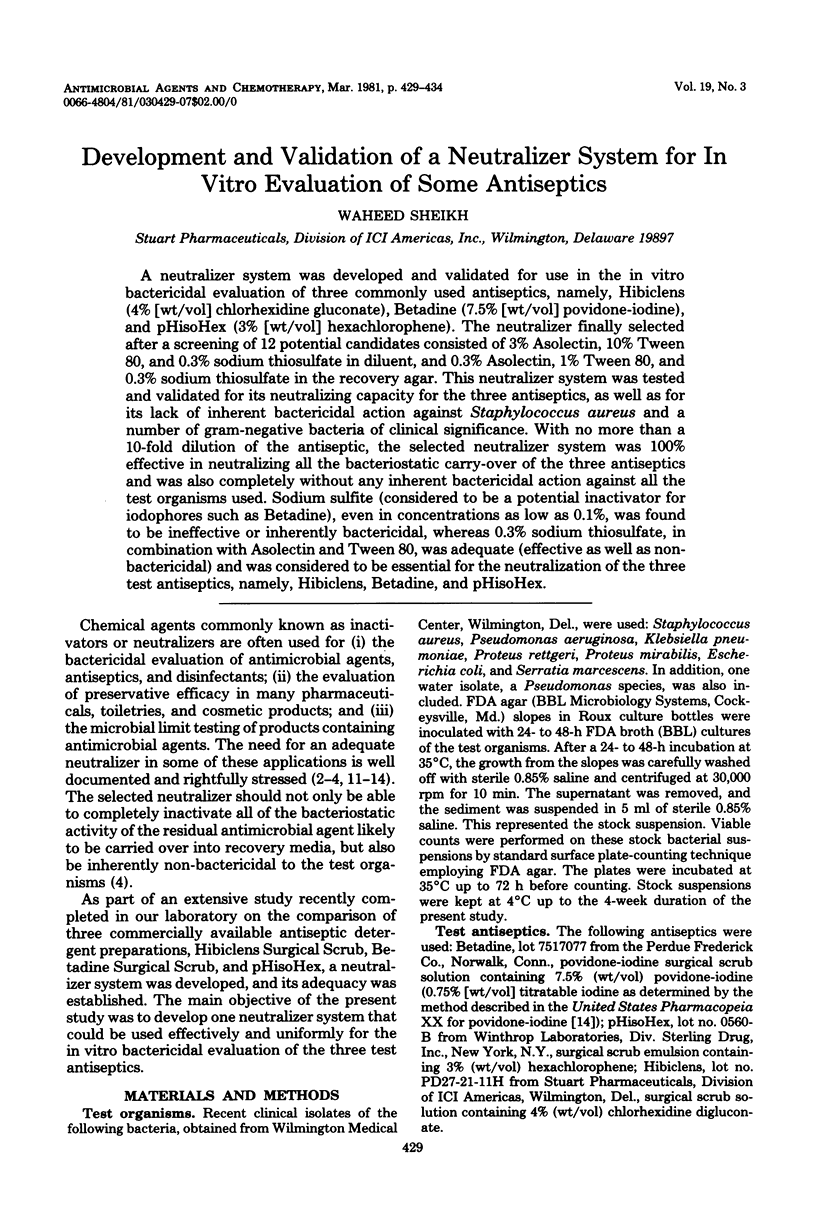
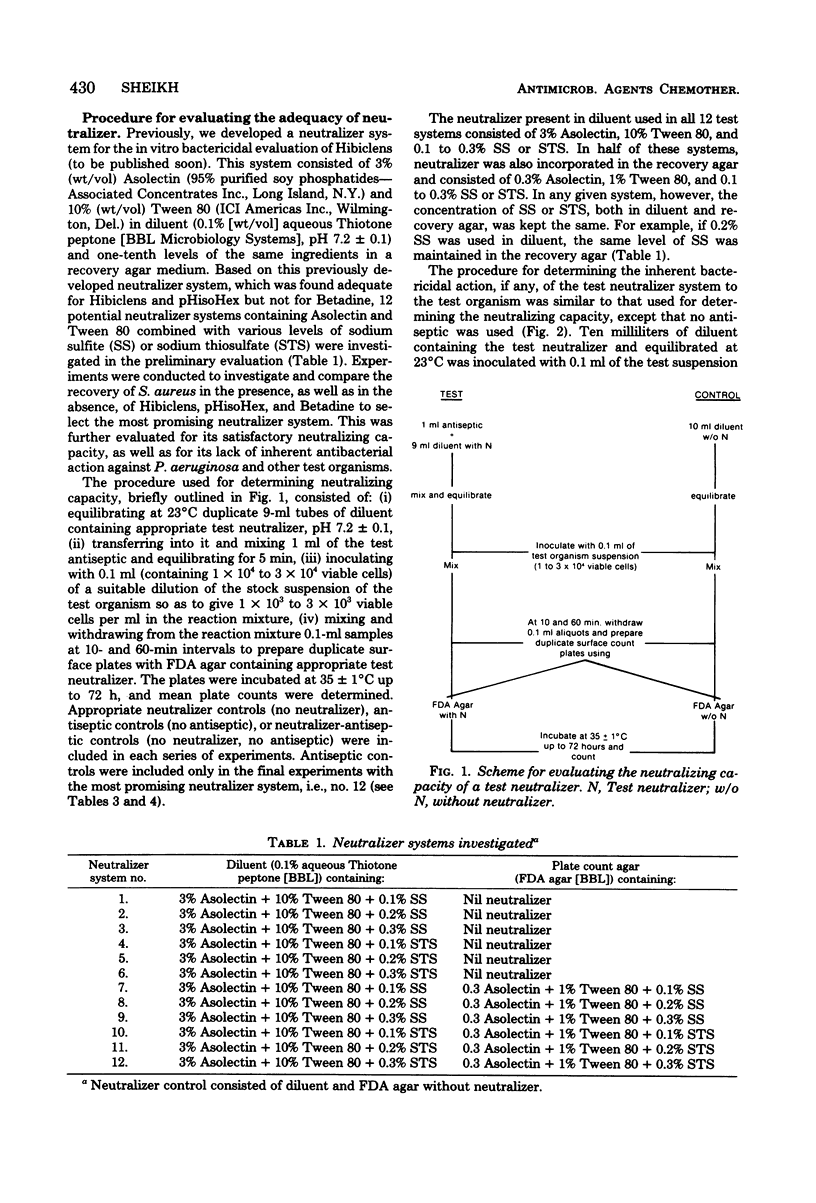
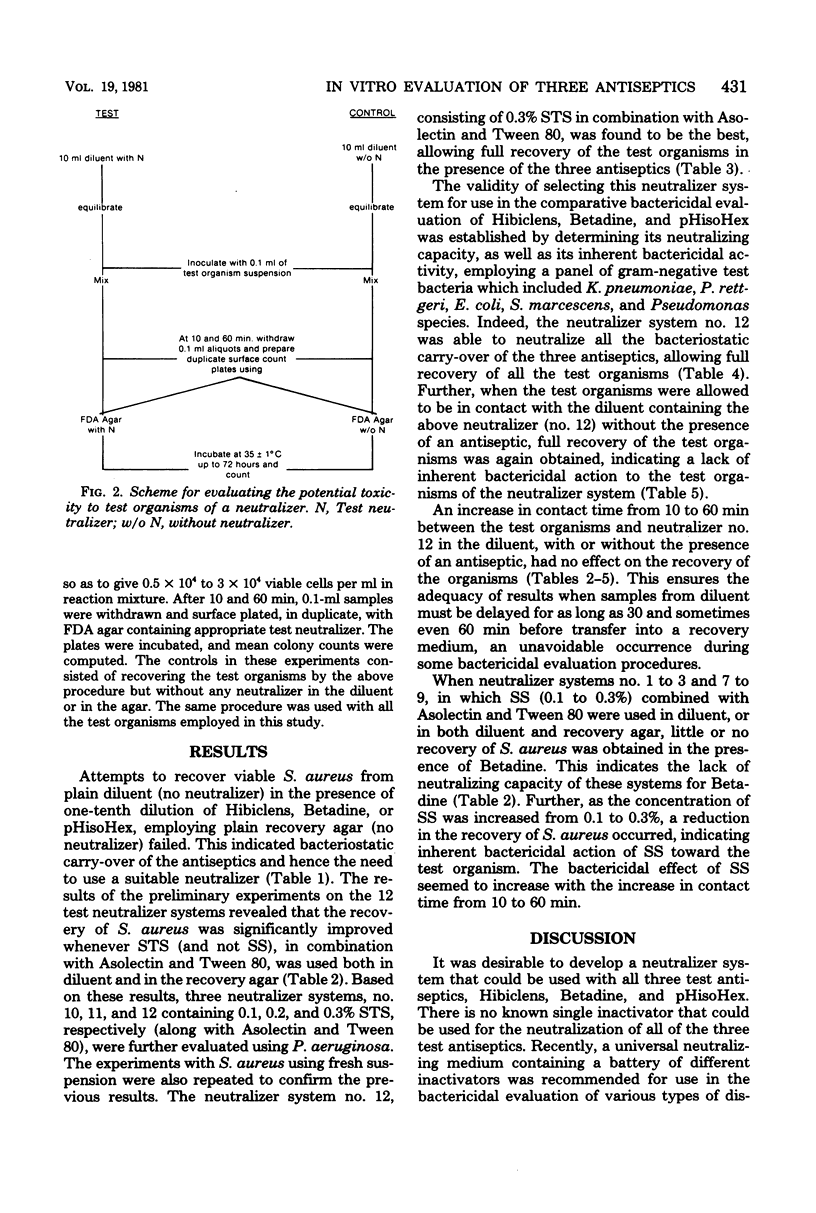
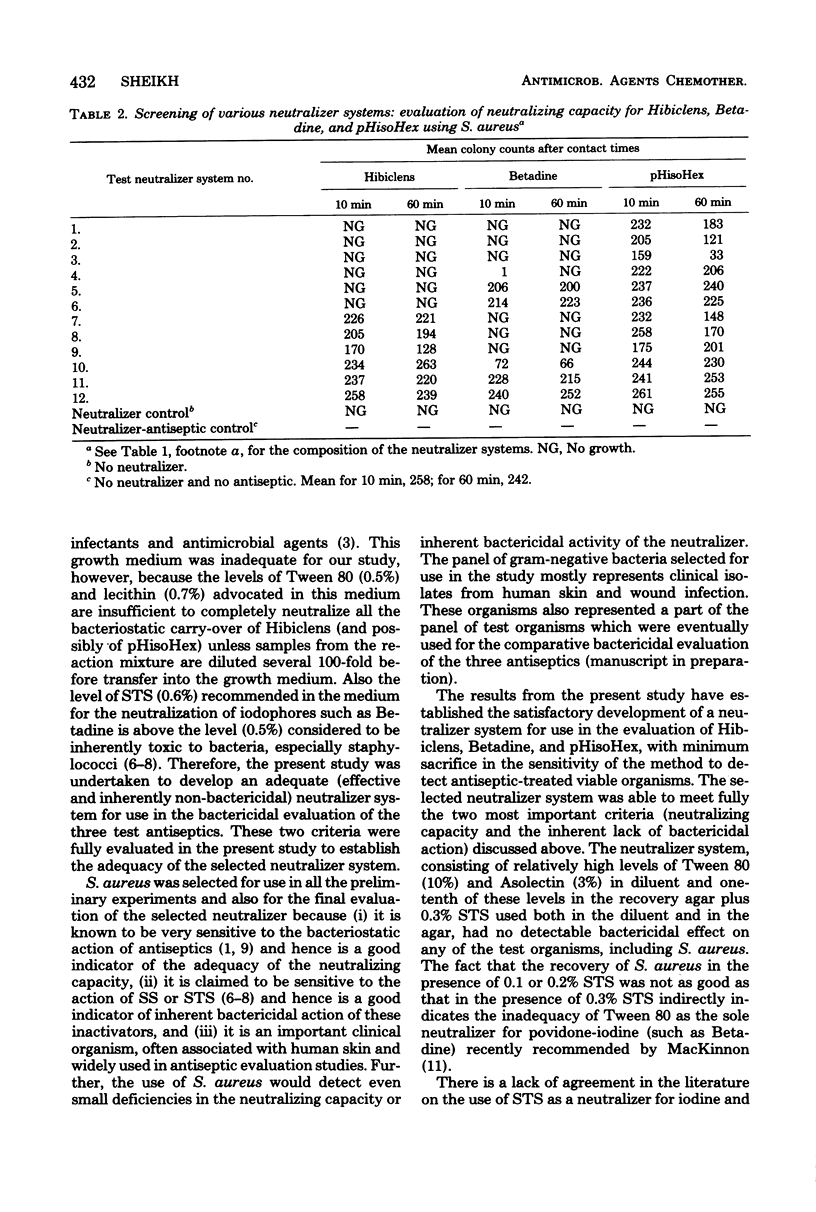
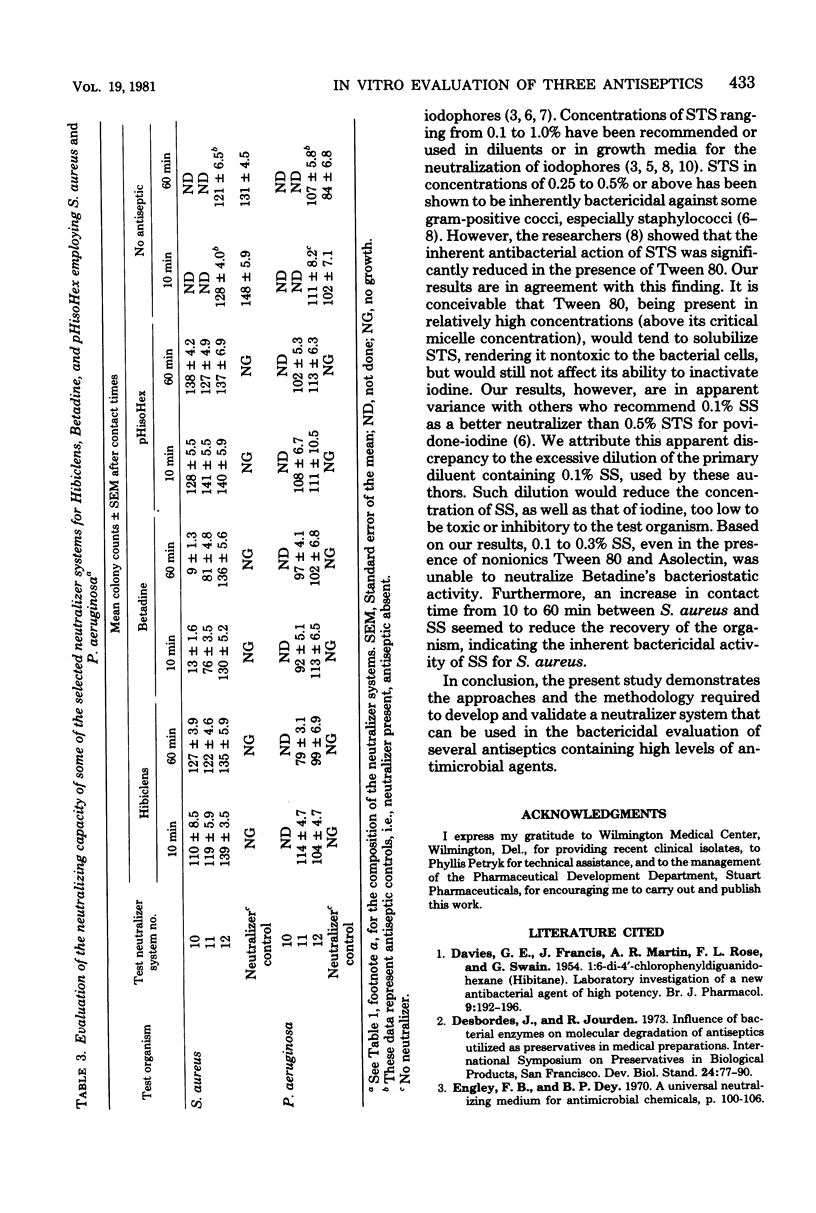
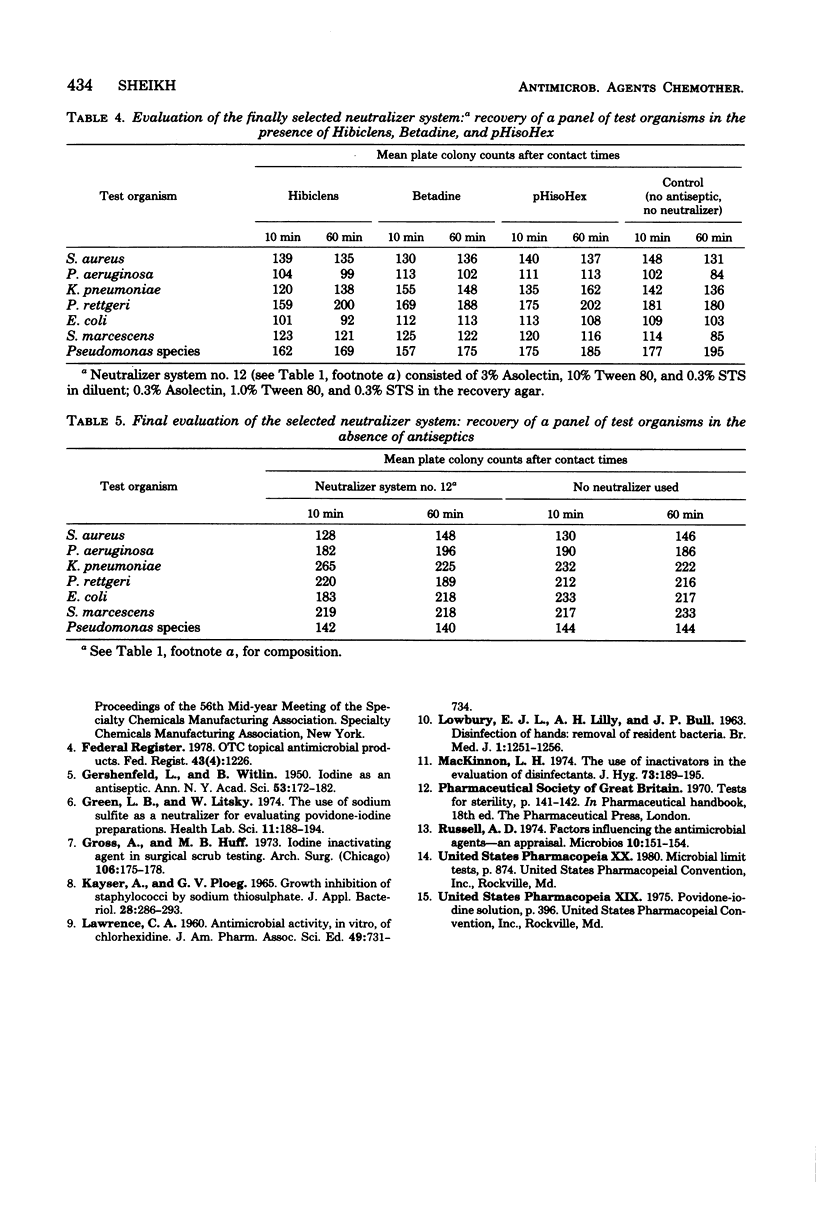
Selected References
These references are in PubMed. This may not be the complete list of references from this article.
- DAVIES G. E., FRANCIS J., MARTIN A. R., ROSE F. L., SWAIN G. 1:6-Di-4'-chlorophenyldiguanidohexane (hibitane); laboratory investigation of a new antibacterial agent of high potency. Br J Pharmacol Chemother. 1954 Jun;9(2):192–196. doi: 10.1111/j.1476-5381.1954.tb00840.x. [DOI] [PMC free article] [PubMed] [Google Scholar]
- GERSHENFELD L., WITLIN B. Iodine as an antiseptic. Ann N Y Acad Sci. 1950 Aug;53(1):172–182. doi: 10.1111/j.1749-6632.1950.tb31942.x. [DOI] [PubMed] [Google Scholar]
- Green B. L., Litsky W. The use of sodium sulfite as a neutralizer for evaluating povidone-iodine preparations. Health Lab Sci. 1974 Jul;11(3):188–194. [PubMed] [Google Scholar]
- Gross A., Cofone L., Huff M. B. Iodine inactivating agent in surgical scrub testing. Arch Surg. 1973 Feb;106(2):175–178. doi: 10.1001/archsurg.1973.01350140037012. [DOI] [PubMed] [Google Scholar]
- Kayser A., van der Ploeg G. Growth inhibition of staphylococci by sodium thiosulphate. J Appl Bacteriol. 1965 Aug;28(2):286–293. doi: 10.1111/j.1365-2672.1965.tb02156.x. [DOI] [PubMed] [Google Scholar]
- MacKinnon I. H. The use of inactivators in the evaluation of disinfectants. J Hyg (Lond) 1974 Oct;73(2):189–195. doi: 10.1017/s0022172400024013. [DOI] [PMC free article] [PubMed] [Google Scholar]
- Russell A. D. Factors influencing the activity of antimicrobial agents: an appraisal. Microbios. 1974 Apr;10(38):151–174. [PubMed] [Google Scholar]


